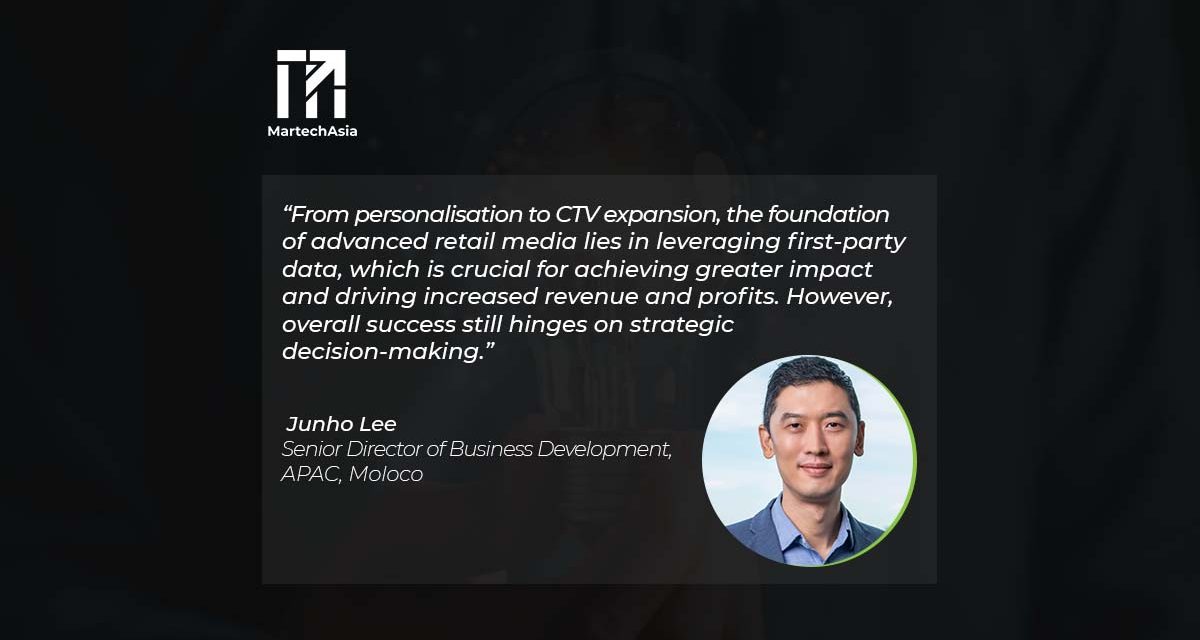Innovation and resilience are the keys to the future for retailers and marketplaces in an increasingly competitive global digital economy.
In Southeast Asia’s dynamic retail media landscape, local platforms such as Grab and Shopee are not only competing against global players, but are also navigating economic challenges, in a highly price-sensitive market.
Coupled with a fast-paced and mobile-first consumer base, retailers in the region are adopting innovative strategies to meet evolving consumer expectations. This approach not only meets customer needs but also unlocks significant revenue potential by transforming into media businesses alongside their core commerce operations.

This shift is exemplified by the rise of in-house commerce media, as retail media businesses transition away from conventional advertising methods to have more control over the entire process.
Some of the early movers are considering radical expansions of media inventory to multiple screens, such as Connected TV (CTV). However, CTV is still in its early stages compared to the West, with mobile remaining the preferred platform in Southeast Asia.
Thus, retailers and marketplaces should prioritise reaching consumers across multiple screens and more importantly, adapt to evolving consumer trends. One effective way to ensure their ROIs remain unaffected by market changes, CTV or otherwise, is through the use of Machine Learning. By delivering high impact, personalised ads, retailers can effectively maintain their competitiveness in Southeast Asia’s dynamic retail media landscape.
Enhancing ad relevance through 1P data and machine learning
While Southeast Asia is home to several established eCommerce platforms like Shopee and Grab, several other platforms are still developing a robust ad business. By leveraging their valuable first-party (1P) data and machine learning technology, these platforms can advance their advertising strategies.
Consumers have always preferred advertisements that don’t feel like traditional ads, which is why we have often seen more creative advertisements with story-telling or celebrity endorsements to convey brand values and foster brand affection. Conversely, direct ads solely focusing on product benefits or other value proposition were often overlooked or disregarded since they were en-masse and not targeted.
However, the landscape has evolved significantly, and consumers seek more relevance in ad content. This is in part driven by the region’s expanding consumer base and a shift towards data-driven strategies, leading to a surge in demand for performance-driven marketing. Platforms like Grab are prioritising performance-driven advertising, yielding early successes that demonstrate the effectiveness of applying the right technology to 1P data.
For more personalised and targeted advertising, advertisers can also leverage cutting-edge algorithms that harness vast datasets to uncover actionable insights. This enables precise targeting, increasing discoverability, and leading to high conversions. By analysing consumer behaviour patterns and preferences, machine learning empowers retailers to deliver more tailored and engaging content, thereby enhancing the overall customer experience.
In-house commerce media driving retail renaissance
In the past, retail media businesses have often outsourced their operations and technology due to the lack of time and appetite to manage them independently, especially since they lacked the skills and resources to manage ad sales and demand generation.
Retailers are now reclaiming control over their advertising business, not by moving management in-house but towards smarter solutions. Instead of hiring tech talent to build and maintain complex adtech systems, retailers are finding value in partnering with experts.
Adopting advanced technology modules from specialized partners allows retailers to access cutting-edge capabilities without the need for extensive development or significant investment. This partnership approach not only streamlines operations but also fosters innovation, helping retailers stay agile and competitive in the evolving retail media landscape.
An example of such an approach can be seen in advanced eCommerce markets like Korea. Yogiyo, one of the largest food delivery platforms serving over 1 million users daily, leveraged Moloco’s Retail Media Platform (RMP) to innovate its ad business while demonstrating its ability to own holistic value chains from business to technology.
Yogiyo recruited over 25,000 advertisers within a month, leading to a 94% increase in its overall advertising business. Across the region, leading eCommerce platforms are following suit, accelerating their journey to advance ad business and technology exploring modular solutions to expedite time-to-market.
CTV’s ascendancy: the opportunities and challenges
After establishing a strong foundation with performance-driven ads, the next long-term steps will be a coverage expansion to new media platforms such as CTV. Smart TV ownership has rapidly accelerated in Southeast Asia, with many countries reaching above 50% penetration driving increased access to over-the-top (OTT) and CTV streaming. OTT streaming is also projected to surpass 50 million users at the end of 2024 and with major players like Samsung Ads investing in the region.
However, unlike in the West with hyperscale retail media platforms like Amazon Advertising, the expansion of retail media to CTV in the region is still in its infancy. Currently, no provider offers dedicated media channels within their retail media offerings for CTV, underscoring the need for platform and solution providers who can effectively leverage CTV audiences with the right technology and network infrastructure.
From personalisation to CTV expansion, the foundation of advanced retail media lies in the invaluable 1P data owned by each commerce platform. Leveraging this data is crucial for achieving greater impact and driving increased revenue and profits. However, overall success still hinges on strategic decision-making: determining what to build and leverage, optimising time-to-market, and initiating innovation at the right juncture.


















